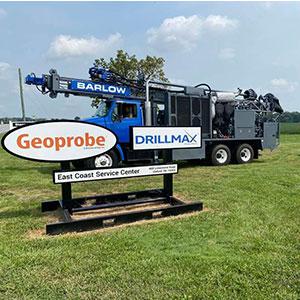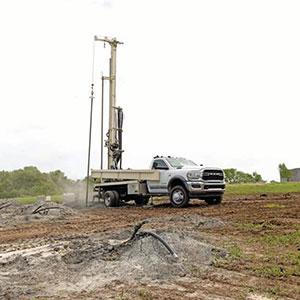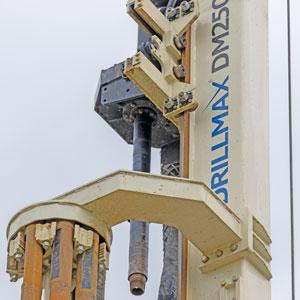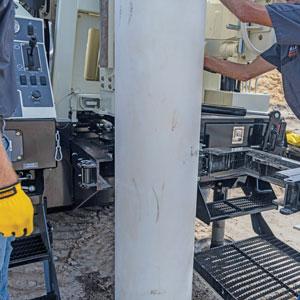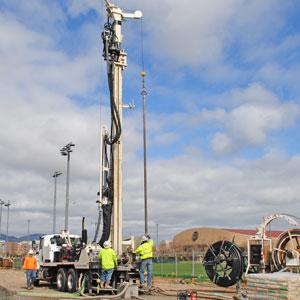

Products Specifically
Designed for Water Well
and Geothermal Contractors
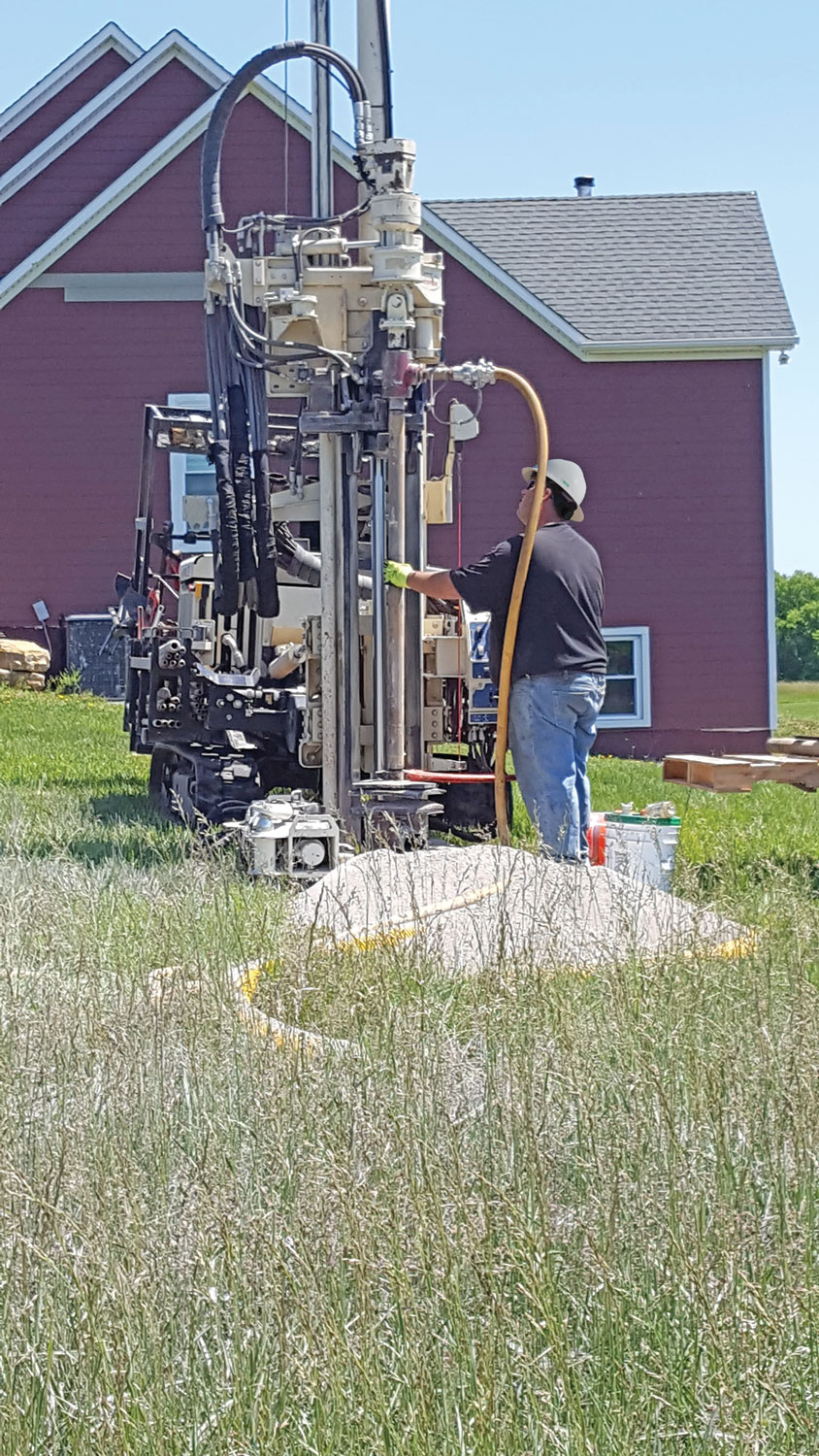
Installing geothermal loops in 6-inch diameter, 150-feet deep bores with a 7822DT using an industry-standard drill rod with a side-port swivel connected to rotary head. An external air compressor was used to clean cuttings out of boreholes and activate downhole hammer.
During the last 23 years, Tony Poulter, vice president and co-owner of RAZEK in Louisburg, Kansas, has operated a Geoprobe® machine. And it seemed to him the second question he was asked every day was, “How deep can that thing go?” And the answer has always been, “until we hit rock or run out of rods!” Poulter said. “Of course the first question was, 'Y’all drillin’ for oil?'."
The answer to both questions has now become more complicated for Poulter and the company.
Poulter attempted to drill a 6-inch boring to 150 feet for the installation of geothermal loops at their headquarters in Kansas. They spent time researching whether they could even attempt rock drilling with their 7822DT, and many experts told them they were foolish to even try. According to Poulter, “they said rock drilling must be done with a larger rig with more weight, more torque, and higher rotation speed.” But, as Poulter found out, the 7822DT outperformed all of the ‘experts’ and created a very lucrative niche market for their firm.
Direct push refusal at the property is around 8 feet, and at 12 feet they encountered clay overburden with intermittent layers of weathered limestone and some shale. During the first 30 minutes of air rotary drilling with the 7822DT, they passed 50 feet and felt “very confident,” Poulter said. Limestone bedrock was encountered around 80 feet, and the drilling rate slowed. As they advanced deeper into the boring, and the rock became tougher to penetrate, the 7822DT never slowed down.
“We passed 100 feet at the 90-minute mark and ended up at 162-feet below ground surface, just 3.5 hours after beginning (give or take a few breaks along the way), ” Poulter said. “We could have kept drilling deeper but, as history has proven, we could only go until we ran out of rods!”
They drilled 6-inch diameter borings to install 15 geothermal loops at their facility to upgrade the company’s furnace and air conditioning systems for ground source geothermal heating and cooling.
Tripping out in 5-foot increments was no small task, but the hydraulic break-out system worked flawlessly on every joint.
Contact Us
1835 Wall Street
Salina, KS 67401
Phone: (785) 825-1842
Fax: (352) 237-0450
Photo Gallery

Related Articles
Four decades ago Michael Barlow began installing pumps and drilling wells with one rig. He diversified into commercial geothermal projects in the early '90s. Today MICHAEL BARLOW DRILLING & SERVICE INC. completes as much service volume as drilling. This i
ID: 215 | Date:
As ASSOCIATED DRILLING adapts to new ownership, they’re also adapting to the smaller DM250. Calvin Piper now oversees technical work — pumps, water lines, out of water calls — while Kyler Erickson oversees drilling. This includes drilling for water well,
ID: 207 | Date:
Choose from a wide range of options, including rod carousel, tailoring your DM250 to your geography and production needs.
ID: 149 | Date:
Wide array of standardized drilling rig components tailors DM450 to commercial water well, geothermal, or cathodic protection jobs.
ID: 144 | Date:
Demand for geothermal energy has generated drilling industry growth. For many companies, geothermal drilling business is booming, while others weather fluctuations by diversifying their service lines with a single rig.
ID: 139 | Date:
